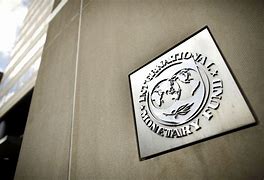The International Monetary Fund (IMF) cut on Thursday its growth forecast for the Middle East and North Africa (MENA) region to 2.6 percent in 2025, marking a sharp downgrade from its October projection of 4 percent growth.
In 2024, average growth in MENA slowed to 1.8 percent from 2.1 percent in 2023, constrained by ongoing conflicts and extended voluntary oil production cuts. Growth is still expected to strengthen in 2025 and 2026, but at a considerably slower pace than anticipated in October.
Higher tariffs are expected to have only small direct effects on MENA countries, given the exemptions on hydrocarbon goods and the small share of non-hydrocarbon goods to the United States. However, the indirect impact could be more significant, as lower global demand will hinder remittances and tourism inflows.
Meanwhile, tighter financial conditions will raise financing pressures on countries with high debt, trade uncertainty will lower domestic confidence and investment, and lower oil prices will dampen activity in oil exporters, even though they may help oil importers.
“We have lowered growth projections for both years—from 4 percent to 2.6 percent for 2025 and from 4.2 percent to 3.4 percent for 2026—to reflect spillovers from global trade tensions and high global uncertainty, a more gradual recovery in oil production, the lingering effects from conflicts in the region, and slower-than-expected progress on structural reforms in some countries.
Growth in MENA oil exporters was stable in 2024 at 2.2 percent, but with significant differences between GCC and non-GCC economies. In the GCC, robust non-oil activity linked to diversification efforts helped offset the negative impact of extended OPEC+ production cuts, while a similar buffer was not at work in non-GCC oil exporters. Growth is projected at 2.3 percent in 2025 and 3.1 percent in 2026, but again with a significant split between GCC and non-GCC oil exporters, said the IMF.
In the GCC, the robust non-oil sector expansion is expected to boost growth. The IMF projects GCC economies to grow 3 percent in 2025 and 4.1 percent in 2026.
Meanwhile, non-GCC oil exporters will face lower growth due to sanctions, lower oil prices, capacity constraints and fiscal unwinding. Non-GCC oil exporters are expected to grow 1.4 percent in 2025 and 1.8 percent in 2026. Lower oil prices are also expected to reduce fiscal and external buffers, with non-GCC countries’ external position turning into a deficit.
Source: Economymiddleeast











